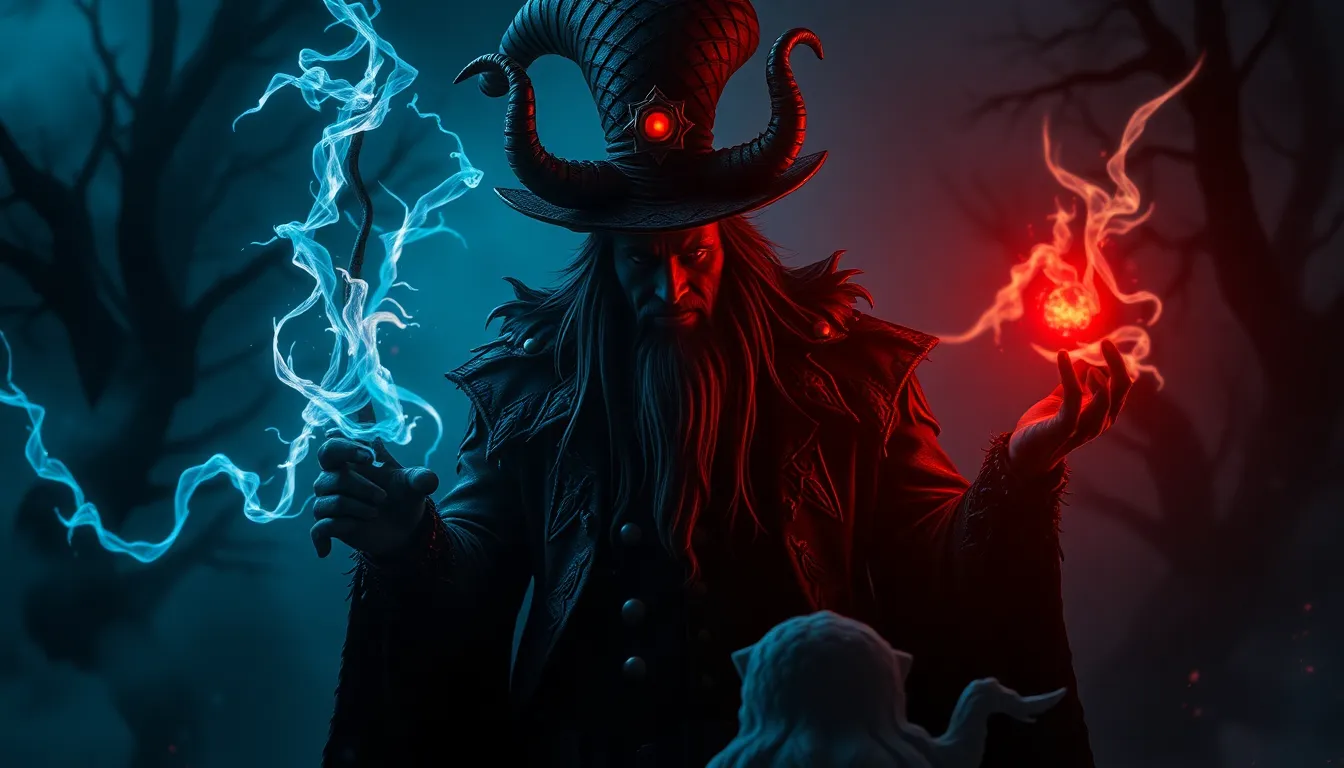The Trickster’s Influence on Popular Culture
I. Introduction
The Trickster archetype is a fascinating figure found across various cultures, representing a complex blend of cunning, humor, and rebellion. Tricksters often challenge societal norms and conventions, providing both entertainment and critical commentary on human behavior.
From the Native American Coyote to the African Anansi and the European Loki, trickster figures are prevalent in folklore and mythology. These characters often embody duality, being both creators and destroyers, and their influence extends into modern popular culture, shaping narratives in literature, film, music, and digital media.
Understanding the role of tricksters in popular culture is essential, as they reflect societal norms and values while simultaneously questioning and subverting them.
II. Historical Origins of Trickster Figures
A. Mythological Roots: Examples from Different Cultures
Trickster figures have deep historical roots in mythology and folklore, appearing in various forms across cultures:
- Native American Tricksters: Characters like Coyote and Raven play integral roles in creation myths and moral tales, often using their wits to overcome challenges.
- African Tricksters: Anansi, the spider, is a prominent trickster in West African folklore, known for his cleverness and ability to outsmart others.
- European Folklore: Figures such as Loki from Norse mythology and Hermes from Greek mythology embody the trickster’s qualities, often blurring the lines between hero and villain.
B. Evolution of the Trickster Archetype Through History
As societies evolved, so did the portrayal of tricksters. Initially seen as figures of chaos, they gradually came to represent more complex ideas, reflecting the changing values and morals of their cultures.
III. Characteristics of the Trickster
A. Key Traits: Cunning, Humor, and Rebellion
Tricksters are characterized by their intelligence and wit. They often use humor to navigate complex situations, challenging authority and societal norms.
B. The Dual Nature of the Trickster: Creator and Destroyer
This duality is central to the trickster archetype. They can create new possibilities while simultaneously dismantling existing structures, making them both essential and disruptive figures.
C. The Trickster’s Role as a Social Critic
Tricksters serve as social critics, exposing hypocrisy and injustice through their antics. By stepping outside societal boundaries, they provide commentary on the flaws and absurdities of human behavior.
IV. The Trickster in Literature
A. Classic Literature: Use of Trickster Characters in Novels and Plays
Throughout history, trickster characters have appeared in classic literature, often serving pivotal roles in the narrative.
B. Modern Literature: Evolution of Trickster Archetypes in Contemporary Works
Contemporary authors continue to reinvent the trickster archetype, reflecting modern societal issues through these complex characters.
C. Case Studies: Famous Trickster Characters in Literature
- Huckleberry Finn: In Mark Twain’s novel, Huck embodies the trickster spirit, challenging societal norms and exploring themes of freedom and morality.
- The Joker: In the Batman series, the Joker represents chaos and anarchy, serving as both a villain and a symbol of societal critique.
V. The Trickster in Film and Television
A. Iconic Trickster Characters in Cinema
Film has seen a plethora of trickster characters, each adding to the narrative complexity:
- Ferris Bueller: The charismatic protagonist of “Ferris Bueller’s Day Off” navigates high school life with charm and cleverness, embodying the trickster’s rebellion against authority.
- Deadpool: A modern trickster, Deadpool’s irreverence and breaking of the fourth wall invite audiences to engage with the narrative in unique ways.
B. Analysis of Trickster Tropes in Popular TV Shows
Television also utilizes trickster tropes, often through characters who challenge societal expectations and norms. Shows like “The Office” and “Parks and Recreation” feature characters whose humor and cunning often lead to unexpected consequences.
C. The Impact of Trickster Narratives on Audience Engagement
Trickster narratives resonate with audiences, providing both entertainment and a reflection of societal issues. They invite viewers to question authority and societal norms, fostering engagement and discussion around important themes.
VI. The Trickster in Music and Performance Art
A. Trickster Themes in Lyrics and Musical Genres
Music often embodies trickster themes, with lyrics that challenge societal norms and conventions. Genres like punk and hip-hop frequently feature artists who embrace the trickster spirit.
B. Performance Artists Who Embody the Trickster Spirit
Performance art has also seen trickster influences, with artists who subvert expectations and challenge societal norms through their work.
C. The Role of Satire and Parody in Trickster Music
Satire and parody are essential elements of trickster music, allowing artists to critique society while entertaining their audiences.
VII. The Trickster and Digital Culture
A. Memes and the Trickster: Humor and Subversion Online
In the age of digital culture, memes serve as modern tricksters, using humor and subversion to comment on societal issues.
B. Video Games: Trickster Characters and Player Agency
Video games often feature trickster characters that provide players with unique agency and narrative choices, allowing for a personalized experience.
C. The Role of Tricksters in Social Media Narratives
Social media platforms have become fertile ground for trickster narratives, where users challenge norms and engage in subversive humor.
VIII. Psychological and Sociological Perspectives
A. The Trickster as a Reflection of Human Nature
Psychologically, tricksters reflect the complexities of human nature, showcasing the balance between order and chaos.
B. Trickster Figures as Agents of Change in Society
Tricksters often catalyze change, challenging the status quo and encouraging societal evolution through their actions.
C. Psychological Interpretations of Trickster Behavior
Various psychological theories interpret trickster behavior as a manifestation of the subconscious, exploring themes of rebellion and conformity.
IX. Contemporary Reinterpretations of the Trickster
A. Gender and the Trickster: Female Tricksters in Modern Contexts
Modern reinterpretations of the trickster archetype have introduced female tricksters, who challenge traditional gender roles and societal expectations. Characters like Yzma from “The Emperor’s New Groove” and Miss Piggy exemplify this evolution, using wit and cunning to navigate their worlds.



